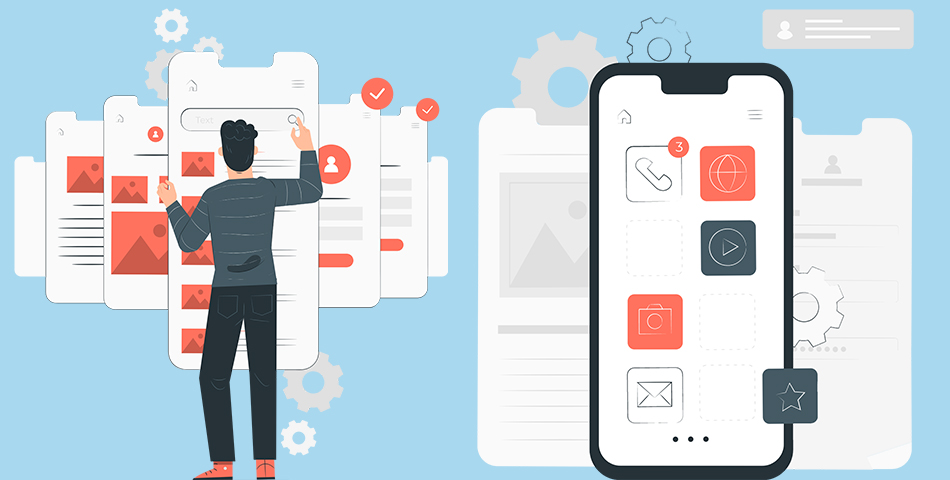Last updated on April 8th, 2024 at 07:13 am
Mobile device fragmentation is one of the main challenges that app developers and testers usually face in their journeys. In easy terms, mobile device fragmentation refers to users (specifically within the target market) running totally different versions of the mobile OS on devices with different screen sizes. Since each mobile device has completely different hardware configurations, app developers ought to make sure that usability and practical aspects of the app are well tested on that device’s hardware and examine ports. There are various mobile app testing organizations that provide a plethora of services to enhance the quality of mobile apps.
Prioritizing the devices and OS versions is one of the necessary steps of real device testing.
Here are a number of the main reasons why mobile apps should be tested on real mobile devices:
Guaranteed Approach
Mobile app testing on emulators and simulators undoubtedly hastens the testing method. Not solely that, this testing strategy conjointly helps in saving crucial $ since you are doing not ought to invest in procuring a variety of real devices.
However, individual and machine testing isn’t a fool-proof approach since the apps would possibly act otherwise once tested on real hardware. it’s necessary to notice that the configuration of the machine on which the individual is put is entirely completely different from the mobile device on which the app is put in.
Almost all apps in several classes e.g. gaming, online streaming, etc. build use of a spread of sensors within the device. Just in case your app is creating use of hardware options like measuring instruments, gyroscope, proximity, GPS, etc.; it’s counseled to urge the app tested on real devices.
Real device testing is AN absolute should just in case you wish to attain performance and unflawed practicality on completely different mobile devices.
Complete Testing
Simulators cannot mimic the mobile hardware options utterly because of that individual and machine application testing should be complemented with real device testing. Testing on emulators and simulators facilitates unearthing problems at the first stages of development.
Complete testing of the appliance is performed solely on real devices. This ensures that the app is doing well from all the views (i.e. practicality, performance, usability, etc.).
Zoom-in & Zoom-out, interaction with hardware peripherals, network strangulation, detection of app crashes, and low memory eventualities is detected by running tests solely on real devices.
Complete testing of mobile apps conjointly includes testing the mobile net app on completely different combos of browsers and operating systems. This could be completed by employing a real device testing cloud and mobile app testing frameworks.
Enhanced Product Quality
The mobile device and OS landscape has been perpetually evolving, with folding phones being the recent entrants within the class. Considering these factors, building and maintaining an on-premise (or in-house) mobile device grid is a technically difficult and dear affair. It will cut down the app unharness cycles wherever code is tested on an eternal basis utilizing the outstanding CI (Continuous Integration) tools.
Potential blockers like an operational burden, reduced device measurability, and reduced productivity are fastened by choosing a true device cloud from vendors like Sauce Labs, LambdaTest, BrowserStack, etc. These real device cloud suppliers allow you to run manual still as automatic tests on devices that are set within the information centers nearest to your location.
Also, you’ll run a test on a real device cloud using widespread test automation frameworks like XCUITest, EarlGrey, Espresso, Appium, etc.; that too with bottom code changes. All of those factors cause the next test coverage and improved app quality, key factors that may be instrumental in deed and holding users of the appliance.
Many app development companies aboard old QA vendors have experience in providing mobile app testing services. Such AN association helps in any fast time to plug the appliance.
Conclusion
Be it iOS or android, mobile applications are put in on a spread of devices that have completely different hardware and code configurations. Although mobile emulators and simulators are used for playacting app testing, you can’t with confidence unharness a high-quality app while not testing on real devices.
Since the tip users of the app can install and run the app on real devices, you would like to rate the testing on devices that are used extensively within the target market. A tool and OS matrix will be available in handy in such eventualities because it is not possible to check the app on all the access devices and OS combos.

Software Testing Lead providing quality content related to software testing, security testing, agile testing, quality assurance, and beta testing. You can publish your good content on STL.



